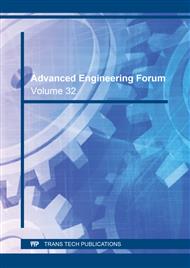[1]
Ballén-Daza, D.A. Implementation of an Aerodynamic Package in a Formula SAE Vehicle. (In Portuguese). Master's Dissertation. University of São Paulo, São Paulo, (2015).
Google Scholar
[2]
Cogan, D.J. The aerodynamic design and development of an urban concept vehicle through CFD analysis. Master's Dissertation. Cape Peninsula University of Technology. (2016).
Google Scholar
[3]
Such, M.R. Aerodynamic Analysis of a Vehicle of Energy Efficiency. (In Portuguese). Master's Dissertation. Federal University of Santa Catarina. Joinville, (2018).
Google Scholar
[4]
Abo-Serie, E.; Oran, E.; Utcu, O. Aerodynamics Considerations for a low drag Shell Eco-Marathon Competition Car. conference on advances in mechanical engineering Istanbul. (2016).
DOI: 10.18186/journal-of-thermal-engineering.353657
Google Scholar
[5]
Panchal, H.; Kumar, K.; Chauhan, R. A Review on Aerodynimcs Study of Vehicle Body using CFD. Conference NCEVT. (2014).
Google Scholar
[6]
Delmunde, R.L.; Maceti, H.; levada, C.L.; Lautenschleger, I.J. Determination of the Aerodynamic Drag Coefficient for a Baja-SAE Vehicle Through Simulation in SolidWorks 2012 Software Scientia Plena. (In Portuguese). v.9, n.7, (2014).
Google Scholar
[7]
Ribeiro, F. A. Aerodynamic Analysis of Wing Profiles for Aircraft Experimentis type Jn-1. Master's Dissertation. (In Portuguese). Federal University of Rio Grande do Norte. (2017).
Google Scholar
[8]
Júnior, M.M.A.; Reis, M.N.E.; Marinho, P.F.; Veloso, C.A.S.; Paula, T.H.B. Numerical study of aerodynamic profile. Revista Interdisciplinar de pesquisa em Engenharia. (2017).
Google Scholar
[9]
Bosch, Bruno. Aerodynamic Analysis of a Computational Fluid Dynamics Simulation (CFD) Energy Efficiency Prototype. Master's Dissertation. (In Portuguese). Federal Technological University of Paraná. Pato Branco. (2016).
Google Scholar
[10]
Ahmed, S.R.; Ramm, G.; Faltin, G. Some salient features of the time-avareged ground vehicle wake. SAE Techical Paper 840300. (1984).
DOI: 10.4271/840300
Google Scholar
[11]
Meile, W., Brenn, G., Reppenhagen, A., Fuchs, A. Experiments and numerical simulations on the aerodynamics of the Ahmed body. CFD Lett. 3, 3239. (2011).
Google Scholar
[12]
Meile, W., Ladinek, T., Brenn, G., Reppenhagen, A., Fuchs, A. Non-symmetric bistable flow around the Ahmed body. International Journal of Heat and Fluid Flow. 57, p.34–47. (2016).
DOI: 10.1016/j.ijheatfluidflow.2015.11.002
Google Scholar
[13]
Thacker, A., Aubrun, S., Leroy, A., Devinant, P. Effects of suppressing the 3D separation on the rear slant on the flow structures around an Ahmed body. Journal of Wind Engineering & Industrial Aerodynamics. 107, p.237–243. (2012).
DOI: 10.1016/j.jweia.2012.04.022
Google Scholar
[14]
Rossitto, G., Sicot, C., Ferrand, V., Boree, J., Harambat, F. Influence of afterbody rounding on the pressure distribution over a fastback vehicle. Experiments in Fluids. 57, 43. (2016).
DOI: 10.1007/s00348-016-2120-1
Google Scholar
[15]
Guilmineau, E., B, D.G., Wackers, J. Numerical simulation with a DES approach for automotive flows. Journal of Fluids and Structures. 27, p.807–816. (2011).
DOI: 10.1016/j.jfluidstructs.2011.03.010
Google Scholar
[16]
Guilmineau, E., Deng, G.B., Leroyer, A., Queutey, P., Visonneau, M., Wackers, J. Assessment of hybrid RANS-LES formulations for flow simulation around the Ahmed body. Computers & Fluids. (2017).
DOI: 10.1016/j.compfluid.2017.01.005
Google Scholar
[17]
Krajnovic, S.; Minelli, G.; Basara, B.; Rao, A. On the two flow states in the wake of a hatchback Ahmed body. Journal of Wind Engineering & Industrial Aerodynamics. Gothenburg. v 173, pp.262-278. (2018).
DOI: 10.1016/j.jweia.2017.10.021
Google Scholar
[18]
Corallo, M., Sheridan, J., Thompson, M.C. Effect of aspect ratio on the near-wake flow structure of an Ahmed body. Journal of Wind Engineering & Industrial Aerodynamics. 147, p.95–103. (2015).
DOI: 10.1016/j.jweia.2015.09.006
Google Scholar
[19]
Miranda, D.A. Influence of Mesh Geometry and Mesh Refinement on Mathematical Models of Thermoplastic Injection Simulation Tools. IOSR Journal of Mechanical and Civil Engineering. 15, 38-44. (2018).
Google Scholar


